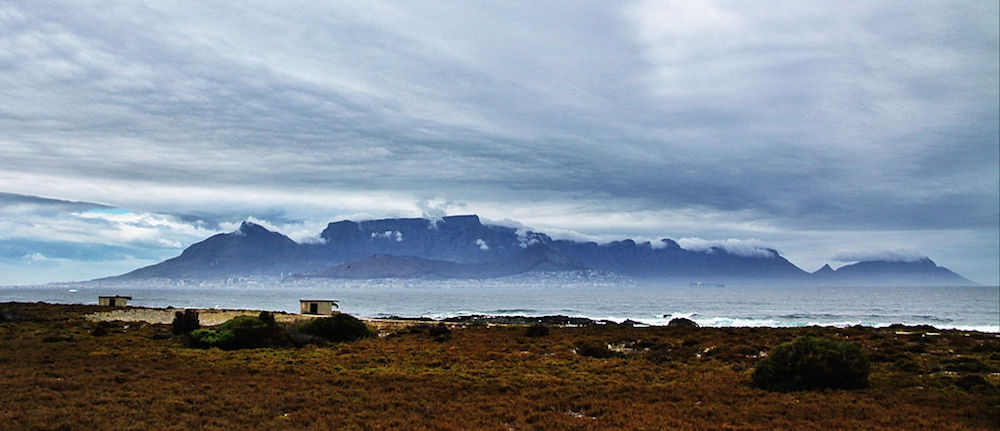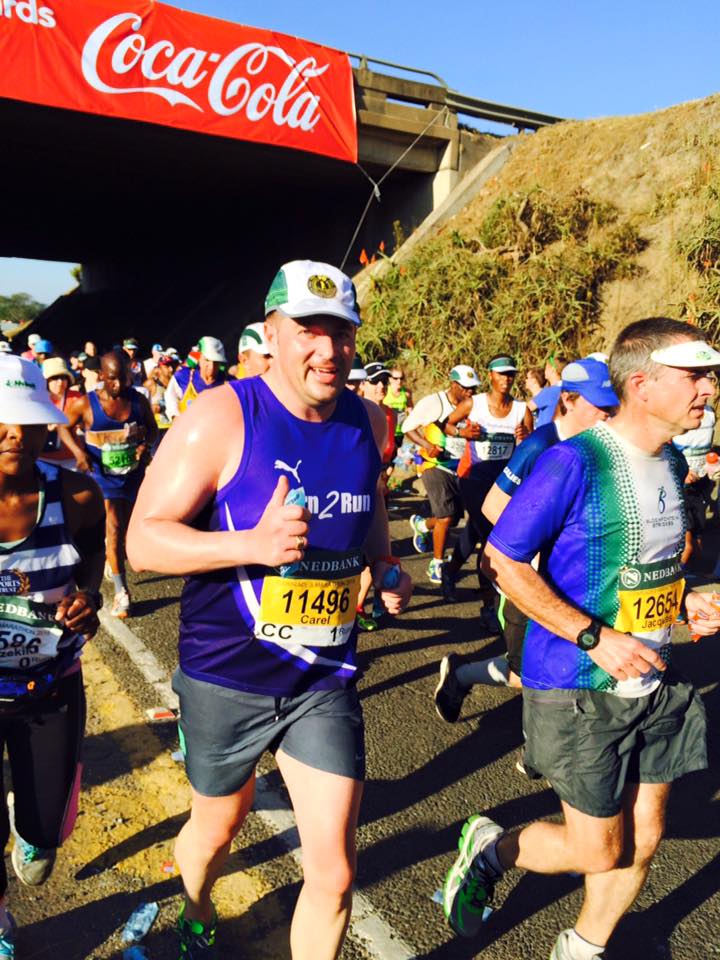
Robben Island… the great escape
Today I am going to prison – and I can’t wait! For years I’ve been meaning to go to Robben Island, a mysterious land mass just off the coast of Cape Town that’s always seemed so close, yet so far away. The island is home to the notorious apartheid-era institution that once held some of South Africa’s most famous black political prisoners, including the most famous of them all, Nelson Mandela.
The boarding queue for the ferry starts in the spring sunshine outside the Robben Island Museum at the Victoria & Alfred Waterfront. It leads through an echoey, tiled reception area and down a two-storey ramp into the entrance hall. After snaking around a few times in the hall, we find ourselves at an airport-type security station with X-ray machines, begloved security officers and stern-looking bouncer types who would probably not hesitate to perform a cavity search if they deemed it necessary. We make it through, and each of us is rewarded with a strip of red paper to wrap around our wrists. We’ll need to wear these bangles for the duration of our stay on the island. Processing over, we follow our fellow travellers away from the bouncers and – surprisingly – back into the same same spring sunshine we started in.
“I can’t decide if they’re fucking joking or not,” says an Australian accent ahead of me. The oversunned man attached to the accent looks to be in his early 30s. His haircut, sunglasses and slightly-too-tight T-shirt probably suited him 10 years ago.
“This is Africa, mate,” says another equally Australian accent, this one emanating from Tight-T-Shirt’s smirking companion, probably his father.
To give Tight-T-Shirt his due, the whole “Ellis Island” process does seem rather pointless. But bureaucrats must tick their boxes. Even though the ferries no longer dock at the Robben Island Museum at the Waterfront, the people working the X-rays and handing out the bangles (and, if you’re unlucky, performing the cavity searches) still need to clock their cards.
We cross the public square outside the museum to board the Susan Kruger, an old, slow, tug-like vessel commissioned in 1959 and named after the wife of then-apartheid minister Jimmy Kruger. Susan will ferry us to the island, some 12km away. Her passengers represent a microcosm of Cape Town’s foreign tourism boom: young, old, fanny-packed, back-packed, camera-toting, khaki-hatted Americans, Germans, Scandinavians, Australians, Britons and a smattering of Joburgers. Passengers scurry for seats above deck, hoping to find a spot that offers the best views of Table Mountain.
Two startling blasts from the ferry’s horn herald the start of the journey. As we leave the harbour, the mountain slowly recedes. The long line of cars parked on distant Tafelberg Road, around the lower cableway station, glitter in the sun. There will no doubt be another microcosm of visitors at the top of the mountain today, perhaps charting our course from their vantage point more than a kilometre above us. From where they’re standing it all looks so dinky: a toy boat trailing a white arrowhead of wake, headed towards a small island just beyond the bay.
In reality, the ferry ride is far from plain sailing. When you’re on a 55-year-old tug, squatting on the deck because all the seats are taken, chugging along at 35km an hour over swells that rise higher than the top of the mast, you tend to adjust your romantic expectations rather frequently, in this case about once a minute. That’s around 45 downward adjustments in total. Not that the trip is totally without romance. Watching the city, the harbour, the stadium, and the suburbs receding and merging, with the mountain standing steadfast behind them, is a magical experience – one best appreciated by a local. Like watching a pack of wild dogs at play in the bush, catching the Gautrain, or enjoying a wind-free December day on Camps Bay beach … only we know why it’s so special.
Susan forges ahead. Her droning engine strains as she climbs the swells and her prow smacks up a head of froth every time it breaks the surface on the other side. Twenty minutes into the journey the passengers grow bored of taking selfies, panos and videos and settle down for the rest of the voyage. There’s a brief murmur of activity as we pass a lone seal lolling on its side, waving lazily at us with one of its flippers. No one comments on the fact that “robben” is the Dutch word for seal. Could this be a descendant of the original “robben”, after which the island was named, bidding us a lukewarm welcome?
On approach, Robben Island looks like a quaint seaside village: neat, single-storey buildings set back from the ocean, positioned to maximise the views of Table Mountain. A few palm trees and a small jetty fuel the illusion that we’re about to arrive at a modest holiday hamlet that’s just dying for summer to start. On board the Susan Kruger, a mother and her two young daughters – summer-frocked and wide-brim-hatted with a groaning picnic basket at their feet – spontaneously burst into song. “We’re all going on a summer holiday,” they sing, with proud Dad capturing every note on his HD video camera. I wonder if they’ll make their extended family watch the video when they get back to Joburg. Maybe they’ll keep it to show at one of the girls’ 21st birthday parties. Or even both of them.
The summer holiday vista fades quickly. Once we pass the jetty, the beach bungalows give way to a clump of squat institutional blocks that once housed the island’s prisoners.
Susan makes a gentle starboard turn, following the coastline to the eastern side of the island before groaning between the concrete breakwaters that protect the harbour. She docks alongside the Sea Princess, a towering white catamaran with cushioned seats, an on-board bar and two Fiat-500-sized outboard engines. The crew, dressed all in white like they’ve just stepped off the Love Boat, meticulously bustle about on the lower deck while the glamorous passengers, drinks in hand, mingle on the deck above.
The dock itself is practically deserted. The hands are standing by to help with Susan’s mooring. There’s also a group of Asian visitors pacing up and down, like they’re waiting for something or someone.
“Ni hau!” comes a call from above in a familiar accent. Tight-T-Shirt has clambered to the top of the Susan Kruger and is waving enthusiastically at the people on the dock. He looks at Dad, grinning at his own antics. Dad grins back in a “that’s-my-boy” kind of way. The rest of us quietly gather up our belongings and disembark.
Facing us from across the docking platform is a jubilant wall, as high as a house. “FREEDOM CANNOT BE MANACLED!” says its banner headline. Below these words, a number of South African anti-apartheid freedom fighters are shown raising their fists, as if to prove the point.
The Red Bangle Brigade is ushered to a stand of five idling buses. Tight-T-Shirt and Dad board bus number 3. Luckily there’s room on another bus. We take our seats. General chatting ensues, which is quickly interrupted by a practised voice on the bus’s PA system. Thanks to a loose connection, every third or fourth word sounds like “ghxk”.
“Good morning ladies ghxk gentleme-e-e-e-n. My ghxk is Nthombi and I will be ghxk guide on your bus tour of ghxk-ben Island toda-a-a-y.”
Nthombi has the ability to deliver every word at the same pitch, except at the end of each sentence when she stretches out the last syllable while gradually lowering the tone.
“It’s like she’s reading a script,” says the man sitting next to me, craning to see if he can spot it in her hands.
Nthombi has been doing tours of Robben Island since 2007, commuting from Cape Town five days a week. I do a bit of dodgy maths as the bus pulls off: There are four to six tours to Robben Island each day. Let’s assume, on average, that each tour guide does three tours a day, given that tours only operate in the right weather conditions. Let’s also assume that Nthombi works about 230 days per year. Multiplying this number by three tours a day, we arrive at a total of 690 tours per year. Nthombi has been doing the same tour for seven-and-a-half years, which means that our bus ride was her 5175th tour, give or take. The point is, she doesn’t need a script. As we travel from point-of-interest to point-of-interest, she monotonously rattles off facts, figures and anecdotes at an alarming rate – “… the prison was ghxk by political prisoners … the island is 574 hectares, 12km in circumference and ghxk takes four hours to walk all the way around it … it’s been a trading post, a refreshment station, a penal colony, a ghxk, a leper colony, a prison island and now it’s a museum … it has ghxk 200 permanent residents … in 2013 the education department ghxk the island’s only school and started transporting the 18 pupils to schools on the mainland every da-a-a-a-y …” – tapering each sentence off right at the end.
In addition to no schools, there are also no banks, no supermarkets, no restaurants and no bars – except on the cell windows, of course. There isn’t even a decent gift shop. I was at least hoping to bring home a Robben Island fridge magnet for my mother. Or a T-shirt that says, “My son went to prison on Robben Island and all I got was this lousy extended sentence on a cheap T-shirt that doesn’t quite fit, in a colour that doesn’t suit me.”
We stop at the limestone quarry where prisoners once worked eight hours a day, seven days a week in extreme weather conditions with no protection from the elements. This quarry is the reason why Nelson Mandela never shed a tear in his old age. The dust and glare caused irreparable damage to his tear ducts, which dried up and were eventually removed.
There is a low cave entrance at the back of the quarry, lower than the height of a man, which leads to what we might today call a break room. This is where prisoners secretly discussed politics during lunchtime. Nthombi tells us the cave was meant for ghxk as a toilet, but that the men made sure to ghxk before they left for the quarry every morning so that they could keep this space as a place of learning. I can only imagine the glaring, dusty hole in the ground and wonder if the exposed rock still bears the pick marks made by the last men who worked here. Sadly, I have to rely purely on my imagination to visualise the quarry – white men in shirts working their sjamboks; black men, topless, working the stone – as we’re not allowed off the bus.
Nthombi does, however, allow me to slip out at one point to take a photograph of a tortoise stumbling along the side of the road. This little guy got a lot of attention from my bus-mates, who seemed far more interested in him than they were in the quarry.
“My background is actually in theatre,” Nthombi tells me when I ask how she landed this job. “I love to perform for people. Being a tour guide was a good career choice for me when the acting thing didn’t work out.”
In 2007 Nthombi signed up for the department of arts and culture’s tour guide programme. After completing the course, she took a job with the department and was assigned to Robben Island.
“Do you enjoy it?” I ask.
“Why does everyone ask me that?” she replies. And then, smiling, “Are you offering me something?”
Once an actress, always an actress.
After the whistle-stop bus tour around the island, Nthombi and her entourage (the bus driver and another woman who just seemed to be along for the ride – perhaps Nthombi’s understudy?) drop us at the prison and set off back to the dock to pick up their next audience.
Zozo Zamele Madolo – “… but you can call me Zozo” – is waiting for us inside the prison, where he was incarcerated from 1977 to 1982. He refuses to divulge exactly why he was sent to the island.
“We were all terrorists back then,” he says, with an almost-conspiratorial smile that makes me feel a little uncomfortable.
Was he part of the Soweto uprising, perhaps, which took place the year before he was imprisoned? Or was it something more sinister? Like … did he bomb something? Surely not. Zozo doesn’t look like the bombing type at all. In tour-guide mode he is entirely affable, like someone who recently became a grandfather. Given that he is 60 years old, this is a distinct possibility. I imagine his smooth head, thin-framed spectacles, open smile, soft belly and too-loose watch proving irresistible to a young tot who is just learning to clamber and grab and giggle. He is a jovial, chubby man, dressed comfortably in a collared shirt, six-button sweater vest and navy blue chinos that probably had to be taken up a little when he got them home. His shoes are designer trainers, New Balance, pristine white with black trim. It’s a practical uniform that allows him to stay comfortable on his feet all day and add or remove layers as the weather changes. It’s a far cry from the standard-issue uniforms for black prisoners on Robben Island in the early days. Back then they were forced to wear short pants all year round. Prisoners of other races were issued with long trousers that protected them to some degree from the cold and the sun.
“I was lucky,” he says. “I was only here for five years. Some people spent more than 15 years here. They were the unlucky ones.”
Zozo herds the Red Bangle Brigade from room to room, building to building, passing the library, the censors’ room, the yard where prisoners were tortured for misdemeanours as trivial as missing a spot shaving, the mess hall, the kitchens, endless prison blocks – Block F, Block D, Block C …. after a while it all starts looking the same. Suddenly, we stop. Zozo makes his way to the back of the crowd, opens a wooden door and smiles.
“Here it is,” he says. “This is the cell where prisoner number four-double-six-six-stroke-sixty-four … Nelson … Rolihlahla … Mandela was held.” He makes the proclamation clearly and loudly, with great reverence, as if a trumpeting fanfare that only he can hear has just echoed down the squeaky passage, signifying that this is the time. (“Do it now, Zozo! Open the door now!”)
Thick bars prevent access to the cell. The crowd jostles impatiently to take photos between the bars. I manage to snap a selfie (or perhaps, in this case, a cellfie?) before turning around to grab a quick peek inside. The cell is unimpressive: The walls are painted a nondescript institutional beige and the floor is glossy, time-smoothed concrete. A thin mattress, a few blankets, a small table and a clay pot lie shoved in a corner. The window is high above the ground. Madiba would probably have had to stand on the pot on top of the table to look out into the prison yard outside. As a boy, during the apartheid era, I always imagined Nelson Mandela spending his evenings gazing wistfully through his window, out across Table Bay, pen poised as he drew inspiration from the lights of the city before jotting down another paragraph or two of his prison memoirs, while the rest of the world sang haunting refrains calling for his release. This is nothing like I imagined.
In truth, prison life was brutal. Zozo speaks of beatings, isolation, hard labour, two cold showers a week, bland food with no nutritional value, sleeping on the floor in a room with 59 other inmates, extreme heat, extreme cold, missing your family, missing your life.
“They locked me up for five years against my will,” he says. “At times, I lost my right to study. They beat us. They censored our letters. And now I’m back, doing this job, standing in front of you with a smile on my face. Am I crazy? Am I mad?
“I’ll tell you why I’m here: Firstly, to me, this is a healing process, a form of therapy. I’m healed now. I’ve moved on with my life. Two: I am glad today because our dreams have come true. Three: I want to thank the world for their support. Your sanctions, demonstrations, helped us to gain our freedom.”
The visitors look a little confused, but they take the kudos, smiling benignly and nodding benevolently as if to say, “You’re welcome, Zozo. Any time.” I wonder why he doesn’t acknowledge any of the South Africans in the group. “Thanks for being part of the miracle” or “It’s so encouraging to see you taking an interest in our shared past” … or something equally twee. But that’s it. The end. Good bye, and thanks for coming.
As the Brigade snakes back to the dock to board Susan for the homeward crossing, I’m left with an overwhelming sense of “meh”. This should have been a moving experience. As a South African who lived through the transition to democracy I should be feeling proud, educated, energised, more in touch with the history of my country. Instead I feel slightly embarrassed. This is South Africa, on show to the world. This is a Unesco World Heritage Site. This is a “must-see” on any visitor itinerary. It should be world class. Sadly, it’s just dull, like a dreadful movie with a brief cameo by an A-list star from 20 years ago. The most exciting thing is the boat ride – or, as I like to think of it, the great escape.
As one of my fellow passengers said (in an Australian accent) in the ferry on the way back to the mainland, “This is such a significant place. How could they have turned it into something so shiet?”
(Photo credit: Michael Fu)






